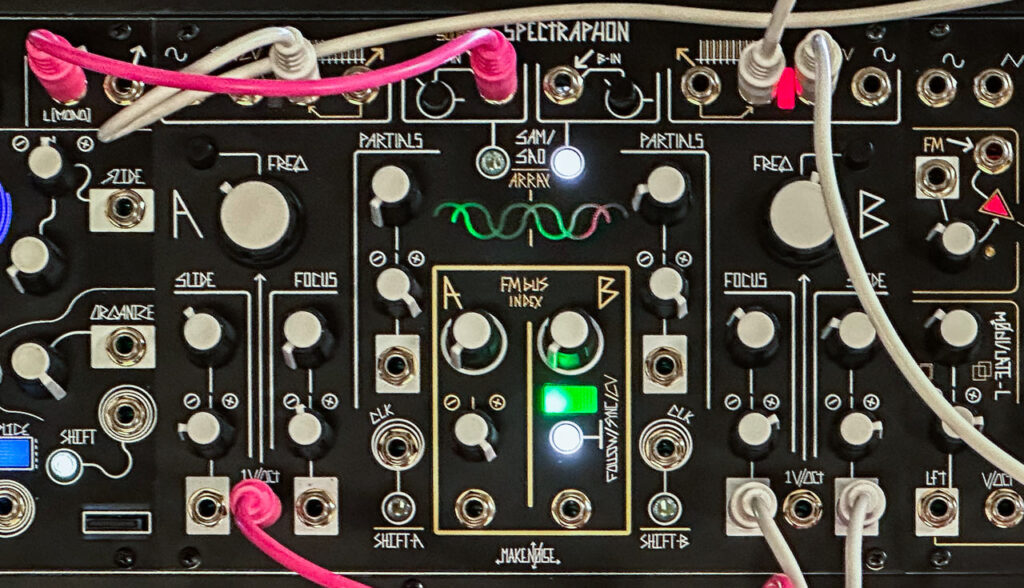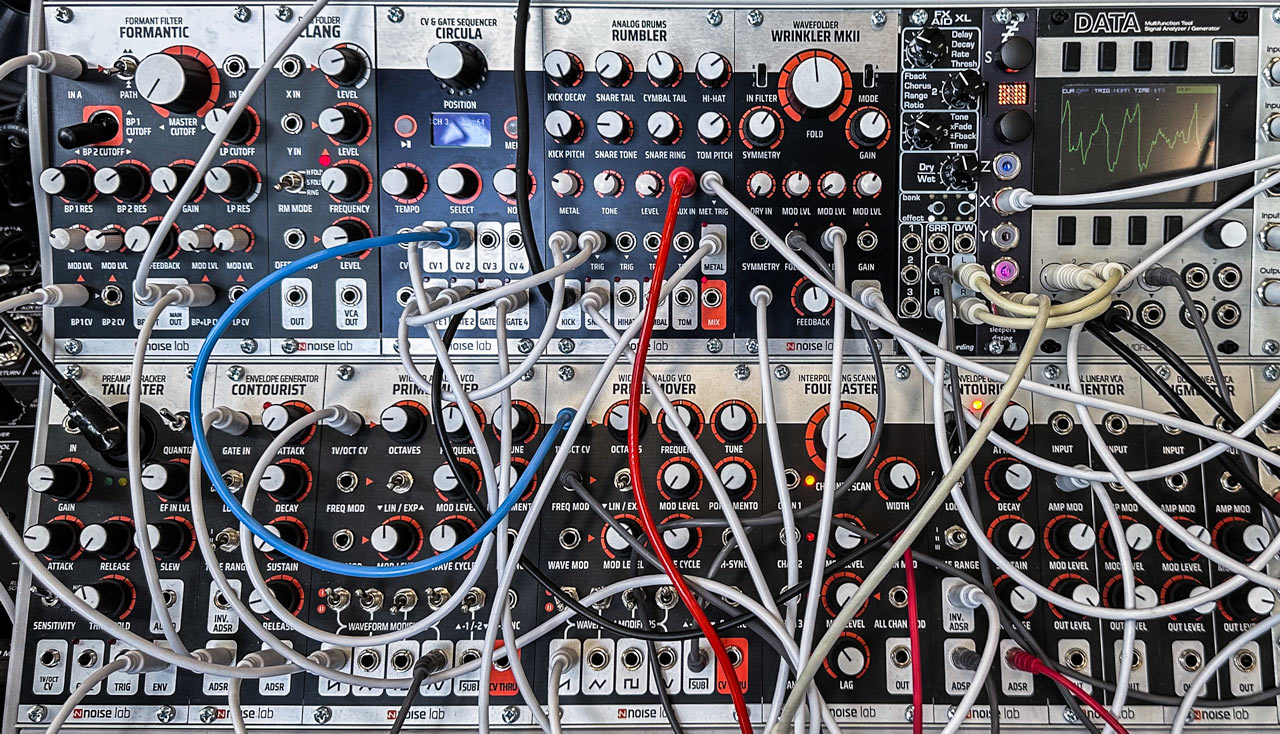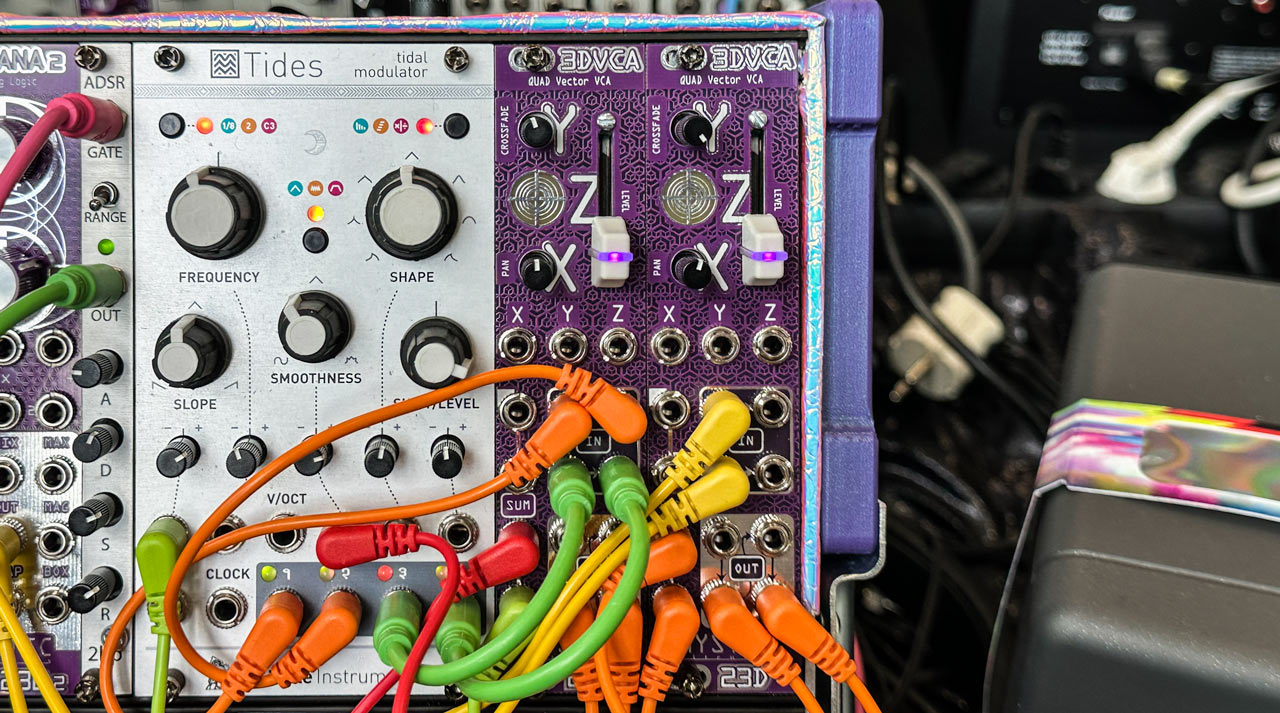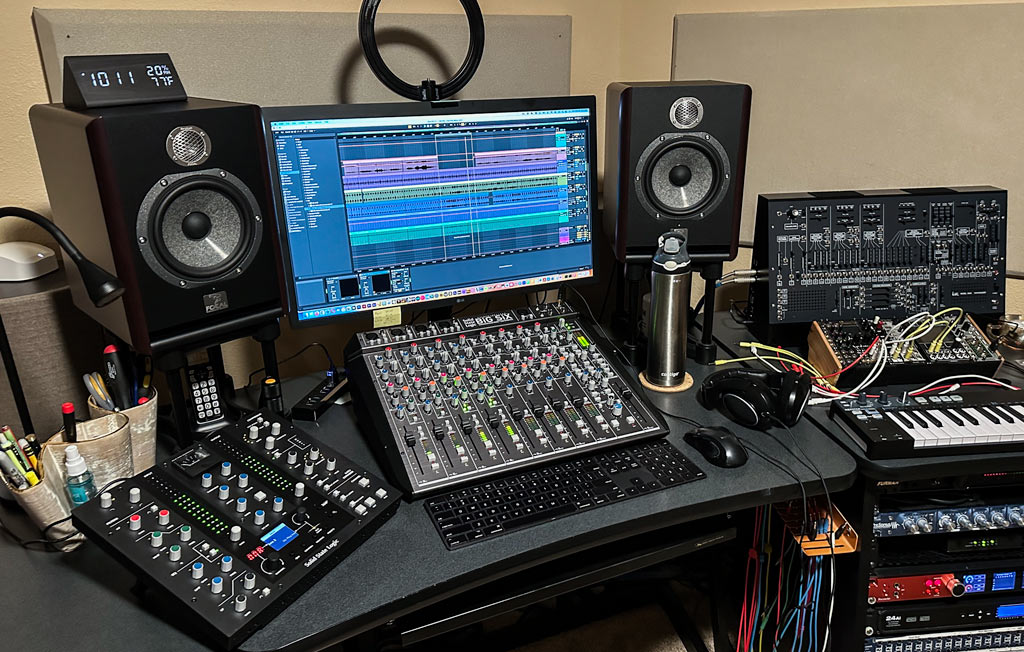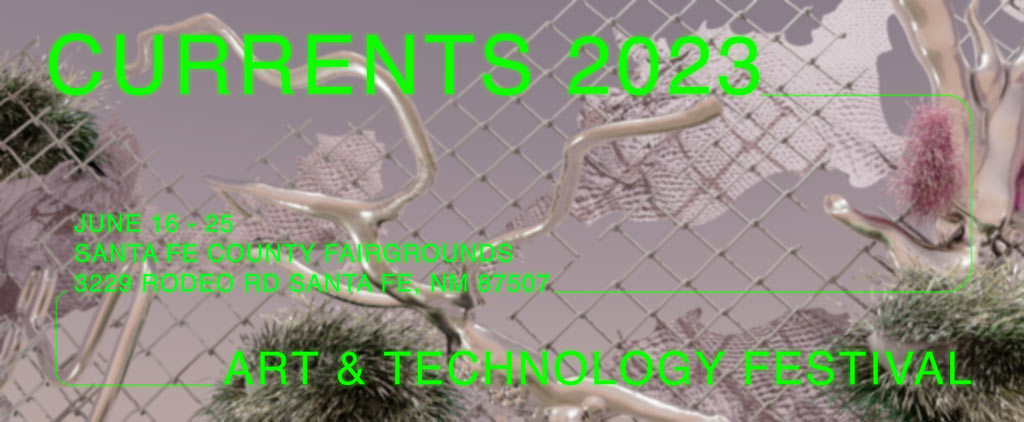I was home barely two weeks after my most recent tour plus the NAMM show, and then I was on a plane to spend two weeks overseas ending at Superbooth in Berlin. The main article below contains my favorites from that show.
But that’s not the only thing going on! Patreon has started allowing me to give you seven day free trials. I have a simple request from modular manufacturers to make our lives easier. Plus, I have an upcoming gig, and I’ve started mixing my next album. On to the details:
- featured article: I visited several dozen modular manufacturers at Superbooth, and came away with a shopping list to update my studio modular.
- Alias Zone updates: I’ve started editing and mixing my next album – and have added some new toys to the studio to help.
- Learning Modular updates: Modular manufacturers could add a few lines to their manuals and online specs to make the lives of users much easier.
- Patreon updates: I can now offer free trial subscriptions to my Patreon page – which I humbly think you should take advantage of it you’re not already a subscriber. I also wrote a bunch of new posts in May, including the start of my in-depth Superbooth reports.
- upcoming events: I’ve put together an afternoon of electronic instrumental music in Santa Fe on June 18. I am also planning to return to Knobcon in September, and to play a series of dates in North Carolina in October.
Superbooth 2023
The family of modules that brought the biggest smile to my face at Superbooth were BeepBoop’s modular tape loop. Note the separate 1U modules along the top of the case for record/erase head, playback head, and motor/capstan.
The annual Superbooth show in Berlin is the holy land for modular enthusiasts to make a pilgrimage to. There were ~250 exhibitors in all (modular as well as hardware, software, pro audio, and even books – I was interviewed by Kim Bjørn in the Bjooks booth during the show) plus a couple of live performance stages, a DIY build room, and a demo/lecture hall – all spread out across multiple locations on the Fez Berlin grounds. I visited several dozen modular manufacturers, and still managed to miss a few.
I was excited by the amount of innovation at the show. There was everything from expensive mega-modules to inexpensive kits, many showing fresh ideas and interesting combinations of features – including a lot of stereo modules, polyphonic modules, multi-channel crossfaders, applications of granular synthesis, interesting takes on subharmonic generation, and more.
It would take far too long to cover everything I saw here. So instead, I’m going to focus just on the modules that made me go “I have to buy that for my own system.” This is not to say there weren’t loads of other interesting modules that may be perfect for you (and fortunately, theres’s lots of internet posts and videos about them) – I just needed a way to winnow down the list for this report. In the order I came across them during the show:
Make Noise Spectraphon
34hp, $599 USD; in production & shipping soon (as of the end of May, 2023)
The latest collaboration between Tom Erbe of soundhack and Make Noise is the Spectraphon dual/complex oscillator. Each oscillator can be set to one of two modes: Spectral Array Oscillation (SAO), which allows you to scan through a saved set of of spectra (harmonics) called Arrays; and Spectral Amplitude Modulation (SAM), which continuously analyses an incoming signal and re-synthesizes it for both real time audio, and to save Arrays of spectra from to use in SAO mode.
The sonic results occupy and morph between additive, spectral, vocoder, and resonator territories. The two sides can also feed into a shared modulation bus for frequency modulation, creating more complex tones. My criteria for a module to be added to my studio modular is that it has to create possibilities beyond my current module selection, and the Spectraphon definitely qualifies.
Noiselab Formantic
16hp, 310 Euro; shipping
I like to craft different combinations of harmonics that go beyond the typical filtered sawtooth and square wave sounds. That’s why I prefer wavetable and additive oscillators, as well as formant filters. Noiselab’s Formantic contains a 24 db/octave (4-pole) low pass filter as well as a pair of 12 db/octave (2-pole) bandpass filters. A mini joystick on the front panel gives you control over the cutoff for the two bandpass filters, which should be a lot of fun for live performance in particular.
Also shown at last year’s Superbooth but just now entering production is their Tailgater pitch to CV converter. I don’t need it myself, but I have a musician I collaborate with who has been looking for something exactly like this.
Mystic Circuits 3DVCA
6hp, $225 USD; in production & shipping soon
I occasionally perform in quad, so quad mixers and panners are something that’s on my radar. I’m also a fan of Vector Synthesis, which at its core has a quad panner in reverse mixing four sources into one output. So, a compact module that can do both is going to be a no-brainer for me.
The Mystic Circuits 3DVCA has four channels of VCAs with controls that treat them as groups:
- X (aka Pan) controls the mix between the left and right pairs of input jacks
- Y (aka Crossfade) controls the mix between the upper and lower pairs of input jacks
- Z fades all four channels up and down together
Combined with intelligent normalizing of the inputs and sub-mixing on the outputs, you can easily use the 3DVCA as a quad panner/mixer, Vector crossfader, and several other hybrids. It also features “rail to rail” components so that it can pass the entire ±12v Eurorack signal range (not just the ±10v limit of most modules), meaning it has more headroom than a typical module. Taking advantage of that headroom, it has Sum inputs for ganging together multiple modules or to submix other outputs with those on this module.
Klavis Grainity
10hp, $309 USD; just started shipping
The Klavis Grainity presents a different take on “granular synthesis”: Each cycle of the incoming waveform is treated as a grain. The different filter mode outputs (2-pole lowpass, 4-pole lowpass, bandpass, band reject (notch), highpass, and unfiltered) are variations on that original grain. It then uses different “Structures” to switch between those variations. A clever smoothing circuit creates mini-crossfades between those grains. The rate and position of the grain switching can be controlled by Div, Phase, and Track controls. There are separate outputs fore the normal VCF, Granular VCF, and a Mix combination of the two.
The result is a new set of textures which can range from variations on normal filtered sounds to harmonic madness. Slowing changing parameters such as Phase also creates wonderful evolving textures would be great for drones, or sequences that evolve in timbre over time.
Venus Instruments Veno-Echo
16hp, 379 UKP; shipping
For some time now, I’ve been using a combination of three modules to create the filtered, stereo ping-ponging type of echo I prefer. A few stereo echoes were shown at Superbooth that do more or less what I want in one module, with the Venus Veno-Echo definitely on the “more” side of that equation.
The Veno-Echo contains separate left and right delay buffers (up to one minute in length) as well as a parallel reverse buffer (up to 10 seconds; reverse portions are played as timed chunks such as every few beats). There are different stereo “width” options including “cross feedback” (the ping-pong effect I desire), low and high pass filters in the feedback path, and other tonal options such as downsampling and asymmetric saturation/clipping (asymmetric matters because it creates more even harmonics, akin to tube circuits). It can be externally clocked, with different time divisions and multiplications for each channel. And at very short delay times, it turns into a pair of 1v/octave Karplus-Strong plucked string voices. It runs at a 48kHz sample rate, with internal 32-bit processing and 24-bit I/O.
This is Not Rocket Science Bopp & Steve
24hp, 440 Euro; shipping at end of year
The TiNRS Bopp & Steve Space Effect (named partially after the comet Hale-Bopp) is a deconstructed digital reverb, giving you access to many of the internal parameters as well as patch points to create your own out-of-this-world effects.
Many of those individual parameters go beyond what you would find in a normal pedal, module, or plugin: For example, the Pitch section allows you to define up to three notes for chords or tone clusters, controlled by MIDI as well as CV. The Diffuse (smearing), Delay (early reflections, including a Karplus-Strong option), and Tail (the body of the reverb effect itself, with chorus) are equally flexible. It also includes a Freeze mode. During the brief demo I got at Superbooth, I immediately heard several new, useful sounds for a “reverb.” Now I just need to keep a 24hp space open in my Monster studio modular for the rest of the year…
In addition to the above, I already have a Five12 QV-L and plan to get another; I am also looking to get the Xaoc Devices Sofia 1955 Transcendent Waveform Analog Oscillator (introduced last year; I somehow managed to not see their booth this year – so apologies if I missed something new). I was part of the Crowd Supply funding for the bella.io Gliss controller which was even better than expected when I finally got to see it at Superbooth. I was also wishing for a stereo version of the Apollo View Rabbit Hole, which is the most versatile tube tone module I’ve heard yet.
There were a lot of other modules which caught my interest as well, including the Noise Engineering Yester Versio 3-tap stereo delay, the Weston Precision Audio H1 Analog Harmonizer dual VCO with pitch tracking, The Tiptop/Buchla Model 296t Spectral Processor, the Olivella Modular Gravedad TZFM analog oscillator with some alternate waveshapes, the Befaco FX Boy host module that can change personality based on which cartridge from Befaco or a number of third parties (including XOR Electronics and TouellSkouarn) you plug into it, the Frap Tools Cunsa “sound seasoning” quad multimode filter. For Buchla fans, they introduced a 50th Anniversary Music Easel, and Soundfreak were showing EMS VCS3 licensed modules in Buchla(!) format. And I haven’t even mentioned the Korg Acoustic Synthesizer technology they previewed at Superbooth!
So, yeah…I have new ModularGrid page started with all of these planned changes to my studio modular, including making the hard decisions of which modules are going to come out. And for those naysayers who like to claim that Eurorack has become boring…thanks for the laughs; I actually think we’re reaching a whole new level – and it’s exciting to be part of it.
Alias Zone Updates
I have started editing and mixing my next album, tentatively titled Eastern Front. Like many, I do a lot of my audio work inside a computer. However, a few friends and mentors have suggested I try integrating an analog mixing board into my workflow to add some of that undefinable yet desirable “analog warmth” to my normally clean, precise sound. To that end, I have started using a Solid State Logic BiG SiX mixer during these finishing stages. It’s subtle, but I can definitely hear a difference.
The album after that may be a collaboration I’ve been working on. I created a series of beat-less environments as part of an art gallery ambient music project last year, and a friend who I have know for ages (who many of you know as well) has been crafting some really cool overdubs for these environments. The result sounds quite unlike any of my previous albums, but I think it’s just as compelling if not more so.
Learning Modular Updates
This page from the manual for Schlappi Engineering’s Three Body is an example that all other modular manufacturers should strive to match.
A reality in the Eurorack world of having so many modules produced by so many different manufacturers is that they often make their own decisions about critical issues such as control voltage ranges – decisions that might not be compatible with other modules and manufacturers. For example, look at this article I wrote years ago about mismatches in what voltages different oscillators expect to play the same pitch. (You can just jump to the tables.)
That often leaves modular users scratching their heads when they patch together two modules, and they don’t react the way they expected. This is particularly challenging for modular beginners. More advanced users have learned they may have to use a utility mixer between two modules (often with the help of an oscilloscope to figure out what’s actually going on) to get modules to see eye to eye – but that’s still a lot of lost time and creative momentum. This frustration is part of the reason some leave modular, or use their systems less than they otherwise might.
I know better than to expect all manufacturers to agree on a common set of control voltage ranges; even if they did, there’s already thousands of modules out there which might not comply.
However, if users knew up front what each module is sending on its outputs, and what range of CVs it expects on its inputs, this would greatly shorten our learning curve while also reducing our confusion and frustration.
Therefore, I was thrilled to see the page above from the manual for Schlappi’s Three Body module. It tells me that a VCO or LFO with ±5v output is not going to modulate its phase or frequency to its limits, while a ±10v output is going to overdrive it and create clipped “flat spots” in its response where it’s not changing. Same goes for envelope levels and the Index CV input. Especially nice touches are letting me know the voltage range where its pitch tracking will be the best, and that the module needs more than twice its ModularGrid rated power when it starts up – meaning I might need a bigger power supply than I expected using the old “10-20% headroom” rule.
If manufacturers would fill in that table from the first half of Schlappi’s Technical Information page (the left side of the image above) for their own modules – detailing its output levels, and what it expects or where it works best for each input – we would be soooooo happy. It wouldn’t cost them anything beyond a small amount of time; they should already know all of this information from when they designed the module. If they also wanted to also share the second half of the example above (understanding that inrush current in particular may not be “free” to measure), it would help advanced users make additional decisions that would save them grief down the road.
Not every manufacturers reads this newsletter, so let’s help each other out: Ask the companies who design the modules you use to start providing this information. If enough of us ask, they will do it, and we will all benefit. Maybe we can even make it part of what is simply expected, like the width, depth, and steady-state current draw already available on ModularGrid et cetera.
Patreon Updates
I share everything I know and learn about modulars – from patching techniques, to sources for inspiration, to what I’ve learned about composing, recording, and performing with these beasts, to their history – on my Patreon page. I find it’s better suited for sharing in-depth information than social media platforms – especially since I have an index of all the posts. In exchange, I ask $5/month ($12 if you also want access to my Eurorack online courses) to help defray my costs in learning all of this information.
However, I understand a lot of you are cautious about committing to another expense. So, I am very happy to announce that Patreon has started allowing us to offer 7-day free trials. Sign up, poke around (you get access to the entire archive from just the $5 level), read a few posts, and see if you learned anything useful. Over on Facebook where I first announced this, a couple of subscribers volunteered “learnt so so so much from you in my journey” and “it really is one of the best reference and mentoring resources out there.” But if it doesn’t help you, cancel within a week, and it didn’t cost you anything to find out. So please – give it a try.
In the meantime, I created several new posts during May for my subscribers, including:
- Franck Martin: Free Track + Surround Sound Resources
- What I Look For In…VCAs
- Track Breakdown: Nightfall, Kyiv (live version)
- Superbooth 2023 Report, part 1: Make Noise, Weston, Noise Engineering, Buchla/Tiptop, and NoiseLab
- Superbooth 2023 Report, part 2: Mystic Circuits, Schlappi Engineering, Sonocurrent, Klavis, Shakmat
I suspect a lot of June will be spent writing up additional in-depth Superbooth reports (they have a lot more detail than the buying list above). But I’ll also be busy editing an album and performing live, so something undoubtedly will shake out of that as well.
Upcoming Events
I have several performances currently in the planning stages for later this year. I will definitely be performing in Santa Fe in June, while the other dates have verbal commitments but are not yet set in stone.
June 18: Currents New Media Festival, Santa Fe, New Mexico. After I was asked to perform, I moved to make an afternoon event out of it, and invited John Lyell and Craig Anthony Perkins. to also play. Performances will start at 3; I should go on just before 5. Everyone will have music and even art to sell – plus the Currents show itself is a stimulating way for artists to spend a few hours.
September 9: Knobcon Chillout Room, Schaumburg, Illinois. This year I will be playing Saturday afternoon as part of the “afternoon ambience” program.
October 4, 7, and 11: gigs in Asheville, Durham, and Charolette, North Carolina – maybe all of them in quad!
In addition to all of the above, I’m starting to look at what would be involved in building a new studio. I’m already a bit short on space in my current room, and I see Dolby Atmos immersive audio as being both an opportunity and eventually a requirement for electronic musicians like ourselves – and that’s going to require a lot more space. If it happens, that’s another thing I’ll be sure to share with you.
back to the music –
Chris


